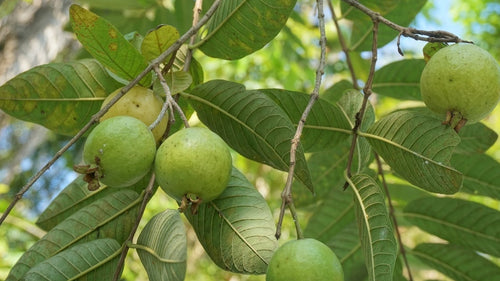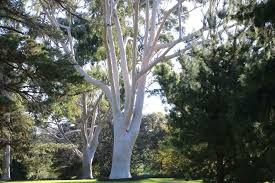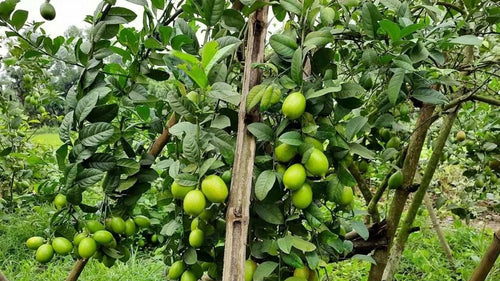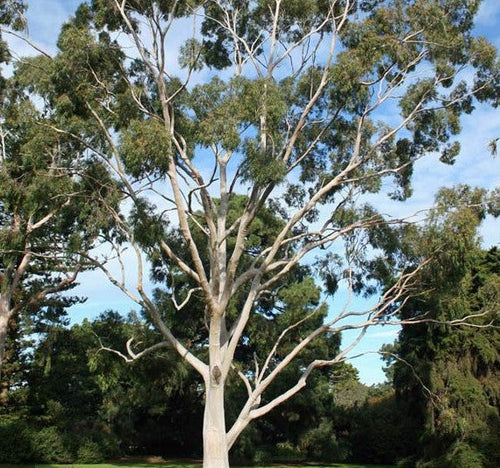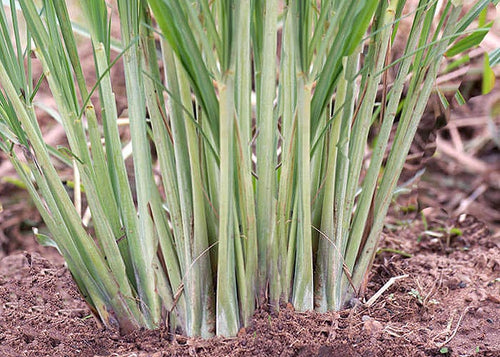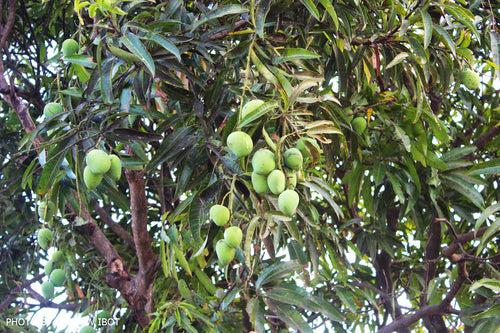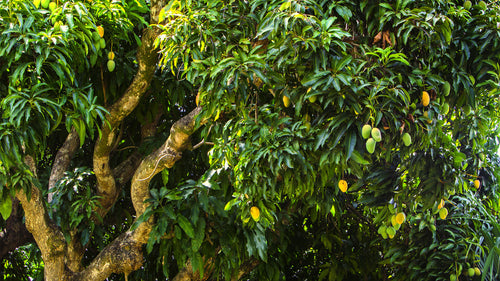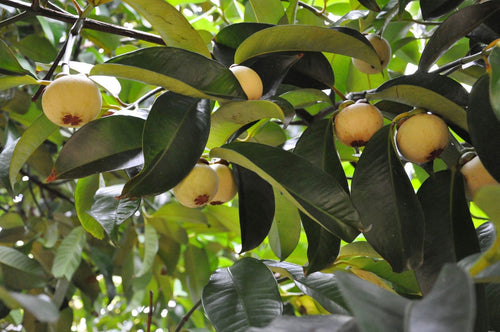Dr. Reddy's Agroforestry Drive: Planting for a Sustainable Tomorrow
Dr. Reddy’s has organized a tree plantation initiative using an agroforestry approach, highlighting their commitment to environmental sustainability. Read more
Project Update 3

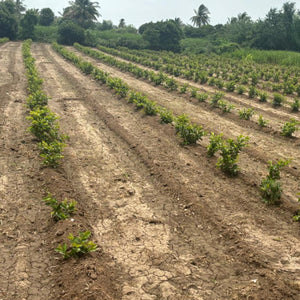
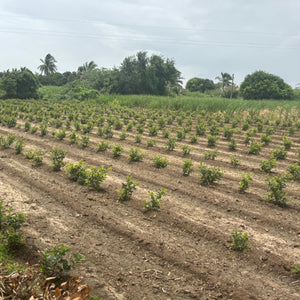
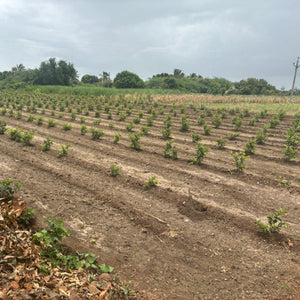
Project Update 2
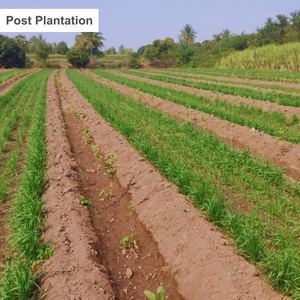
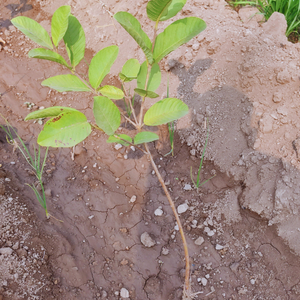
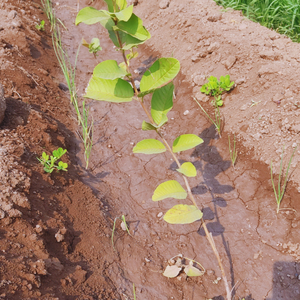
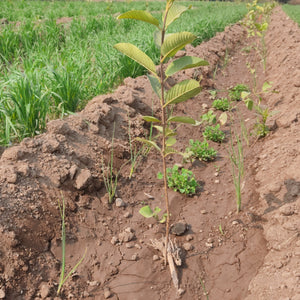
Project Update 1
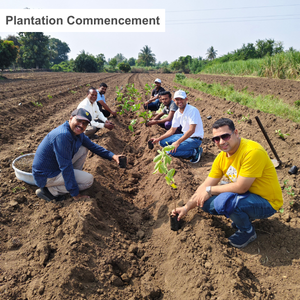
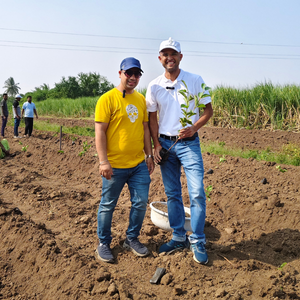

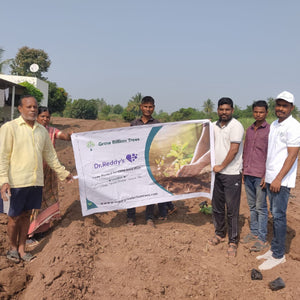
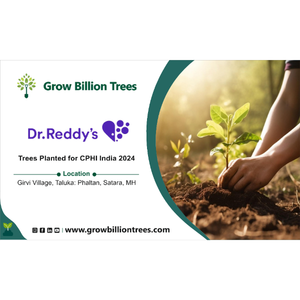
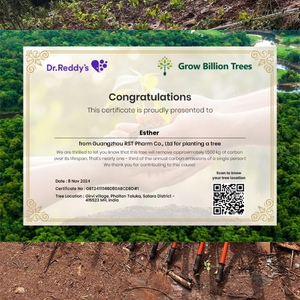
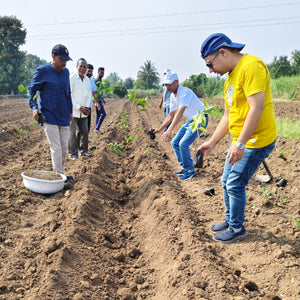
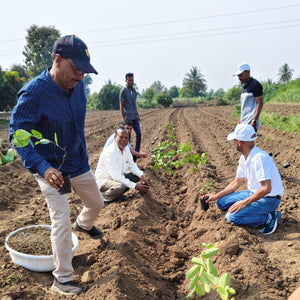
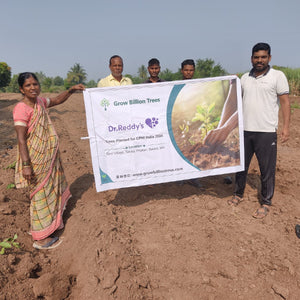
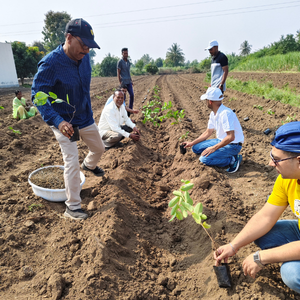
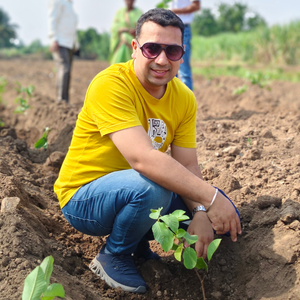
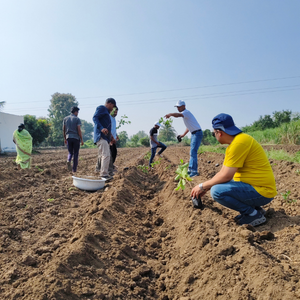
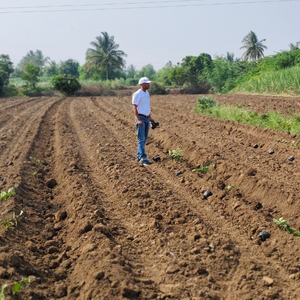
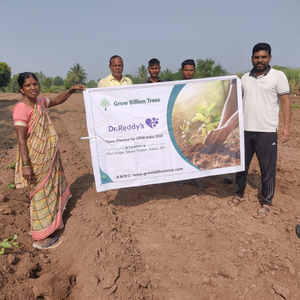
Digital Forest
Forest with 500 Trees planned
Want to plant your tree now?
Plant a Tree @ 299Dr. Reddy's Agroforestry Drive: Planting for a Sustainable Tomorrow
Dr. Reddy’s has organized a tree plantation initiative using an agroforestry approach, highlighting their commitment to environmental sustainability. This initiative combines tree planting with agricultural practices to create an ecosystem that not only enhances biodiversity but also supports local communities and promotes soil health. By integrating diverse plant species with farmland, Dr. Reddy’s agroforestry initiative aims to improve soil fertility, prevent erosion, and create a natural habitat that contributes to a healthier environment. Through this effort, the company demonstrates its dedication to sustainable practices that address both ecological needs and long-term environmental impact. This project serves as a testament to Dr. Reddy’s commitment to reducing carbon footprints and fostering a green, sustainable future for all.
Tree Plantation Date
8th November 2024
Plantation Location
Girvi, Phaltan, Satara - 415523
Trees Planted
Total Count: 500 Trees
Species Name: Guava, Lemon, Mango
Forest Type: Agroforest
Dr. Reddy’s agroforestry tree plantation initiative is a thoughtful approach that combines environmental care with agricultural resilience, aimed at fostering sustainability while supporting local farmers. In this unique agroforest model, Dr. Reddy’s integrates tree planting with agricultural crops, creating a biodiverse environment that enriches soil health, enhances water retention, and combats erosion.
This agroforestry practice benefits farmers directly by promoting sustainable farming techniques, offering shade for crops, and providing additional income sources through trees that yield fruits, nuts, or timber. By introducing trees into farmland, Dr. Reddy’s initiative supports ecosystem restoration while creating a positive impact on local livelihoods.
Beyond environmental sustainability, this initiative empowers farmers to adopt agroforestry, which diversifies their income and provides a protective shield for crops against climate fluctuations. Dr. Reddy’s commitment to agroforestry reflects their broader vision of environmental stewardship, blending corporate responsibility with community support to ensure a green and resilient future.
Advantages Of Agroforest
Enhanced Soil Fertility and Health
The agroforestry approach adopted by Dr. Reddy’s supports soil fertility by adding organic matter through leaf litter and tree roots. Trees in agroforests help fix nitrogen, replenish nutrients, and enhance microbial activity, which are vital for soil health and long-term agricultural productivity. This leads to richer soil that benefits crop yields and sustains healthy ecosystems.
Increased Biodiversity
By integrating trees with crops, Dr. Reddy’s initiative promotes biodiversity, creating a thriving ecosystem where multiple species coexist. The diversity of plants attracts pollinators, beneficial insects, and bird species, which contribute to pest control naturally. This biodiversity supports a more balanced ecosystem, reducing the need for chemical pesticides and fostering natural resilience.
Climate Resilience
Agroforestry builds climate resilience by creating microclimates that protect crops from extreme temperatures and harsh weather conditions. The shade provided by trees reduces heat stress on crops, while their roots stabilize the soil, reducing vulnerability to floods and erosion. Dr. Reddy’s approach helps farmers adapt to climate change, creating stable agricultural practices that withstand environmental changes.
Water Conservation
Trees in agroforests contribute to water conservation by reducing surface runoff and enhancing soil's ability to retain water. The shaded ground in an agroforest minimizes water evaporation, while deep-rooted trees help retain groundwater. Dr. Reddy’s initiative thus plays a crucial role in managing water resources, particularly beneficial in areas prone to droughts.
Increased Farmer Livelihoods and Income
The agroforestry system offers farmers diverse sources of income. Trees planted in an agroforest can yield fruits, nuts, timber, or other marketable resources, adding to the farmer’s primary crop revenue. This diversification reduces financial risks associated with crop failures and boosts rural incomes, contributing to local economic resilience.
Carbon Sequestration and Reduced Greenhouse Gases
Trees act as natural carbon sinks, absorbing carbon dioxide and reducing greenhouse gases in the atmosphere. Dr. Reddy’s agroforestry initiative helps combat climate change by capturing carbon emissions, with each tree planted contributing to a decrease in the company’s overall carbon footprint and supporting global climate goals.
Community and Environmental Education
Dr. Reddy’s agroforestry initiative also fosters environmental awareness and knowledge sharing among local communities and farmers. This initiative promotes sustainable agricultural practices, encouraging more farmers to adopt eco-friendly methods. The program provides hands-on experience, empowering farmers with knowledge that benefits both their livelihoods and the environment.
Long-Term Environmental Impact
Agroforestry is a long-term investment in environmental health. The trees planted today will continue to provide benefits for decades, supporting soil health, biodiversity, and climate resilience. Dr. Reddy’s commitment to agroforestry ensures that the environmental impact extends well into the future, creating a legacy of sustainability and environmental stewardship.
Activities During Tree Plantation
Tree Plantation Purpose
Dr. Reddy’s tree plantation initiative in an agroforestry setup contributes to several United Nations Sustainable Development Goals (SDGs).
1. SDG 2: Zero Hunger
Dr. Reddy’s agroforestry initiative supports food security by creating more sustainable farming practices. Integrating trees with crops enhances soil fertility, increasing crop yields and resilience, which directly contributes to stable food production. By fostering crop diversity and promoting eco-friendly farming techniques, the initiative helps local farmers produce more food sustainably, supporting long-term food security in the region.
2. SDG 8: Decent Work and Economic Growth
This initiative provides economic opportunities for farmers by allowing them to diversify their income. Trees grown in an agroforest can yield additional products such as fruits, nuts, and timber, which can be sold for extra revenue. The inclusion of farmers in the agroforestry system promotes stable employment, encourages entrepreneurial opportunities in rural areas, and contributes to economic growth by creating a steady income stream, thereby improving overall livelihoods.
3. SDG 12: Responsible Consumption and Production
Dr. Reddy’s approach to agroforestry encourages sustainable agricultural practices that reduce dependence on harmful chemicals and synthetic fertilizers. By supporting an organic, ecosystem-friendly approach to farming, the initiative minimizes environmental impact and promotes sustainable production. This responsible method helps balance consumption with the natural regenerative capacities of the land, aligning with the principles of responsible resource use.
4. SDG 13: Climate Action
Agroforestry plays a critical role in carbon sequestration. The trees planted by Dr. Reddy’s absorb and store carbon dioxide, directly combating climate change by reducing greenhouse gases. Furthermore, agroforestry strengthens climate resilience by stabilizing the soil, conserving water, and protecting crops from extreme weather. These efforts represent a significant contribution to climate action, helping mitigate environmental impacts at both local and global levels.
5. SDG 15: Life on Land
By creating agroforests, Dr. Reddy’s initiative promotes biodiversity and restores degraded land. Trees planted in these areas support diverse ecosystems, providing habitats for various species of birds, insects, and small mammals. The approach also prevents soil degradation, minimizes erosion, and maintains soil health. The restored land fosters a rich and thriving ecosystem, enhancing biodiversity and protecting natural resources for future generations.
6. SDG 17: Partnerships for the Goals
Dr. Reddy's partnership with Grow Billion Trees exemplifies the power of collaboration in advancing sustainable development, particularly in achieving "Partnerships for the Goals" (SDG 17). By joining forces, Dr. Reddy’s gains access to expert insights and resources from Grow Billion Trees, enhancing the impact of their agroforestry initiative. This partnership enables a broader reach and greater efficiency in tree planting, as well as improved environmental practices that support sustainable agriculture and carbon sequestration. Together, they share resources, knowledge, and a common mission to empower local communities, making a lasting impact on the environment while demonstrating the effectiveness of cooperative action in achieving global sustainability goals.
ESGs Achieved Through Agroforestry
Environmental (E)
Dr. Reddy’s agroforestry tree plantation initiative supports environmental sustainability by enriching soil health, improving water retention, and fostering biodiversity. Through agroforestry, trees and crops grow together, which enhances carbon sequestration, reduces greenhouse gas emissions, and combats soil erosion. By integrating native and beneficial tree species, this initiative creates balanced ecosystems that protect natural resources and contribute to long-term ecological resilience, aligning with Dr. Reddy's commitment to environmental responsibility.
Social (S)
This initiative empowers local farmers by providing them with sustainable farming techniques and additional income streams from tree-based products like fruits and timber. It fosters community engagement and rural development, as farmers take an active role in managing the agroforest. By creating new livelihood opportunities and promoting agroforestry knowledge within the community, Dr. Reddy’s enhances social well-being, uplifts rural communities, and strengthens social bonds, directly contributing to the social aspects of ESG.
Governance (G)
Grow Billion Trees has supported Dr. Reddy’s in achieving strong governance within its ESG framework by providing expert guidance and structured methodologies for their agroforestry tree plantation initiative. Through this partnership, Dr. Reddy’s has been able to incorporate best practices in environmental sustainability, community engagement, and impact measurement into their governance strategy. Grow Billion Trees ensures that Dr. Reddy’s plantation activities align with global standards, encouraging transparency, accountability, and effective reporting on environmental and social outcomes. This collaboration strengthens Dr. Reddy’s governance approach, showcasing a commitment to responsible, sustainable practices that uphold the company's ESG objectives.
Commitment by Grow Billion Trees
Grow Billion Trees is committed to driving sustainable plantation efforts, ensuring every initiative aligns with key environmental objectives and promotes long-term ecological balance. They focus on selecting native tree species that are well-adapted to local ecosystems, ensuring a higher survival rate and stronger environmental impact.
To maintain plant health and longevity, Grow Billion Trees emphasizes continuous maintenance and regular monitoring of the plantations. This approach helps ensure that each tree thrives, contributing effectively to both biodiversity and climate resilience.
Transparency is a core principle in their operations. Clients receive comprehensive reports, including geo-tagging of planted trees, survival rate updates, and ongoing progress reports. This level of openness allows clients to track the direct impact of their contributions, reinforcing trust and accountability.
Through their dedication to sustainable practices, Grow Billion Trees ensures that every plantation project leaves a lasting positive footprint on both the environment and the local communities it serves.
Summary
Dr. Reddy's tree plantation initiative in the agroforest concept exemplifies a commitment to environmental sustainability and community empowerment. By integrating trees with crops, this agroforestry approach enhances soil health, increases biodiversity, and aids in water conservation. The initiative also supports local farmers by providing them with sustainable farming practices and additional income sources from tree-based products like fruits and timber. This eco-friendly model fosters climate resilience, reduces carbon emissions, and strengthens local ecosystems, aligning with Dr. Reddy's mission to create lasting environmental and social impact through sustainable, community-centered practices.
Trees for Corporates
Trending
Most Popular
1. Agroforestry Practices
Agroforestry combines trees with crops, creating a sustainable farming environment that benefits both the land and the people. In Dr. Reddy’s tree plantation initiative, agroforestry practices are not just a buzzword—they’re the key to environmental sustainability. By planting trees alongside crops, this initiative helps to enrich the soil, increase water retention, and foster biodiversity. Trees act as natural buffers, providing shade to crops while improving microclimates. For farmers, agroforestry means better yields and additional income sources through timber, fruits, or nuts. It’s a win-win for both nature and agriculture! Dr. Reddy's commitment to agroforestry supports long-term environmental health, ensuring a greener planet while simultaneously empowering local communities. The company’s pledge to plant trees for every conference contact made at CPHI Milan 2024 demonstrates that sustainability isn’t just about what you say—it’s about what you do. Through agroforestry, Dr. Reddy's helps grow a more sustainable world, one tree at a time.
2. Sustainable Farming Solutions
Sustainable farming is the backbone of any successful agroforestry initiative. Dr. Reddy’s commitment to sustainable farming solutions through its tree plantation initiative embodies this principle perfectly. By planting trees in harmony with crops, they create an ecosystem that boosts productivity while maintaining environmental integrity. Sustainable farming practices like these ensure healthier soil, cleaner water, and reduced chemical inputs. The addition of trees provides farmers with a source of additional income through fruits, timber, and nuts—without depleting natural resources. Dr. Reddy's initiative at CPHI Milan 2024 emphasizes the need for such practices, proving that sustainability can be both profitable and eco-friendly. Planting a tree for each contact made at the conference might just be the greenest networking strategy ever! Sustainable farming is not just about growing crops—it’s about growing a future where nature and agriculture thrive together.
3. Biodiversity in Agroforestry
Biodiversity is the cornerstone of a thriving ecosystem, and Dr. Reddy’s tree plantation initiative is all about supporting it. Agroforestry is a fantastic way to boost biodiversity by creating a habitat where various plant and animal species can coexist. Dr. Reddy’s initiative incorporates this idea by planting trees alongside crops, providing a diverse environment where birds, insects, and beneficial microorganisms can thrive. This biodiversity-rich approach helps strengthen ecosystems, making them more resilient to pests, diseases, and climate change. For local farmers, a biodiverse environment means healthier crops and fewer inputs required, as nature takes care of much of the pest control. Dr. Reddy’s commitment to biodiversity through agroforestry is a nod to the importance of maintaining balance in nature. After all, when the environment thrives, we all do!
4. Carbon Sequestration with Trees
Trees are the earth’s natural carbon filters, and Dr. Reddy’s tree plantation initiative is harnessing their power for climate action. By planting trees as part of their agroforestry model, the company is contributing to carbon sequestration, which plays a crucial role in mitigating climate change. Trees absorb carbon dioxide from the atmosphere and store it in their roots, trunks, and leaves, helping to reduce the overall concentration of greenhouse gases. In addition to their carbon-storing capabilities, trees also improve soil health and water retention, making the land more resilient to extreme weather events. Dr. Reddy's commitment to planting a tree for every contact made at CPHI Milan 2024 highlights the company’s proactive approach to fighting climate change. Carbon sequestration isn’t just an environmental buzzword—it’s a necessary step toward preserving our planet for future generations.
5. Agroforestry for Local Farmers
Agroforestry isn’t just about environmental sustainability—it’s about supporting the livelihoods of local farmers. Dr. Reddy’s tree plantation initiative is designed with farmers in mind, aiming to improve their incomes while promoting sustainable practices. By integrating trees into agricultural systems, farmers can diversify their income streams. Trees provide fruits, timber, nuts, and other products that can be sold for additional profit. Plus, trees help improve soil quality, reduce water usage, and provide shade for crops, all of which lead to better yields. This sustainable farming practice helps farmers protect their land from erosion and mitigate the impacts of climate change. Dr. Reddy’s initiative, which plants a tree for every contact made at CPHI Milan 2024, underscores the company’s commitment to both environmental health and economic prosperity for local farmers. It’s a win for the planet and the people who depend on it!
6. Soil Health in Agroforestry
Healthy soil is the foundation of any successful agricultural practice, and agroforestry is an excellent way to nurture it. Dr. Reddy’s tree plantation initiative promotes soil health by incorporating trees alongside crops. The roots of trees help aerate the soil, improve nutrient cycling, and reduce soil erosion. In turn, this leads to healthier crops and more resilient farmland. Trees also act as a natural fertilizer, enriching the soil with organic matter that supports microbial life. This regenerative approach to farming reduces the need for synthetic chemicals, creating a healthier, more sustainable farming system. By pledging to plant a tree for every contact made at CPHI Milan 2024, Dr. Reddy’s is helping to spread the message that soil health is vital for both environmental sustainability and agricultural productivity.
7. Water Conservation in Agroforestry
Water is one of the most critical resources in agriculture, and agroforestry helps conserve it in a big way. Dr. Reddy’s tree plantation initiative integrates trees with crops to enhance water retention and reduce the need for irrigation. The roots of trees help to improve soil structure, allowing it to absorb and retain more water, reducing runoff and preventing erosion. Trees also create a canopy that provides shade to crops, reducing water evaporation. With water scarcity becoming an increasing concern globally, Dr. Reddy’s commitment to agroforestry practices offers a solution that benefits both farmers and the environment. By planting a tree for every contact made at CPHI Milan 2024, Dr. Reddy’s highlights the importance of water conservation in creating sustainable farming practices that thrive in the face of climate challenges.
8. Sustainable Development Goals (SDGs) in Agroforestry
Dr. Reddy’s tree plantation initiative is not just a step toward environmental sustainability; it’s a direct contribution to achieving several UN Sustainable Development Goals (SDGs). Through its commitment to planting trees for every contact made at CPHI Milan 2024, the company is supporting SDGs like Climate Action (SDG 13), Life on Land (SDG 15), and Responsible Consumption and Production (SDG 12). By adopting agroforestry practices, Dr. Reddy’s is promoting sustainable farming, reducing carbon emissions, and improving soil health. This initiative also supports local communities by empowering farmers and improving their livelihoods. Dr. Reddy’s agroforestry approach serves as a great example of how businesses can align with global sustainability efforts while making a positive impact on the environment and society. It’s a green blueprint for a better future, one tree at a time!
FAQ
What is Dr. Reddy's tree plantation initiative?
Dr. Reddy's tree plantation initiative focuses on promoting environmental sustainability through agroforestry practices. The company pledges to plant trees as part of their commitment to reduce carbon emissions, improve soil health, and support local farmers. Agroforestry combines tree planting with agricultural crops to foster a healthier ecosystem. This initiative aligns with Dr. Reddy's broader vision of contributing to a greener, more sustainable future.
How does Dr. Reddy's agroforestry model work?
Dr. Reddy's agroforestry model integrates trees with crops, enhancing biodiversity, improving soil health, and increasing water retention. By planting trees alongside agricultural crops, the initiative helps create a more resilient farming system. This model provides farmers with additional income from tree products like fruits, timber, and nuts while promoting sustainable farming practices that benefit both the land and the local community.
What are the benefits of agroforestry for local farmers?
Agroforestry offers local farmers multiple benefits, including improved soil fertility, reduced water usage, and better protection against climate fluctuations. Trees provide shade, help retain moisture in the soil, and offer additional sources of income through fruits, nuts, or timber. By incorporating these sustainable farming practices, Dr. Reddy's supports farmers in maintaining healthier, more productive land.
How does agroforestry help in soil health?
Agroforestry enhances soil health by promoting better nutrient cycling and reducing erosion. The roots of trees help aerate the soil, improve water absorption, and prevent soil degradation. This leads to stronger, more resilient crops and a healthier farming ecosystem. Dr. Reddy’s agroforestry initiative actively supports these practices, ensuring long-term sustainability for farmers and the environment.
What role does Dr. Reddy's play in supporting sustainability?
Dr. Reddy's is dedicated to promoting environmental sustainability through its tree plantation and agroforestry initiatives. The company’s pledge to plant trees and integrate sustainable farming practices demonstrates its commitment to reducing carbon footprints, improving soil health, and supporting local communities. Dr. Reddy’s actions align with the global call for sustainability and a greener future for all.
How does agroforestry contribute to climate change mitigation?
Agroforestry plays a significant role in climate change mitigation by sequestering carbon dioxide in trees and soil. Trees absorb CO2 from the atmosphere and store it, which helps in reducing overall carbon emissions. Dr. Reddy’s initiative helps combat climate change through tree planting, making a positive impact on the environment while supporting sustainable farming practices.
How does Dr. Reddy’s tree plantation initiative support biodiversity?
By integrating trees with crops, Dr. Reddy’s tree plantation initiative enhances biodiversity. Trees provide habitats for birds, insects, and other wildlife, supporting a diverse ecosystem. This biodiversity improves pest control, pollination, and overall ecosystem health, benefiting both agriculture and the environment. Dr. Reddy's commitment to biodiversity through agroforestry is key to creating resilient, thriving ecosystems.
What is the impact of Dr. Reddy's tree plantation on water conservation?
Dr. Reddy's agroforestry model promotes water conservation by improving water retention in the soil. Trees help reduce water evaporation and improve the soil's capacity to hold moisture, making farming more resilient during droughts or irregular rainfall. This water-efficient farming practice supports sustainable agriculture, ensuring that both crops and trees thrive with minimal water usage.
How does Dr. Reddy’s initiative help local communities?
Dr. Reddy’s tree plantation initiative helps local communities by promoting sustainable farming, improving livelihoods, and enhancing agricultural productivity. By integrating trees with crops, farmers gain additional income through tree products like timber, nuts, and fruits. Moreover, Dr. Reddy’s initiative fosters community engagement and supports local economies by promoting green, sustainable farming practices.
How can individuals get involved in Dr. Reddy's tree plantation initiative?
Individuals can support Dr. Reddy's tree plantation initiative by spreading awareness about sustainable farming and agroforestry. While the company's initiatives are mostly focused on corporate actions, individuals can participate by promoting tree planting in their communities, supporting local farmers, and adopting sustainable practices in their own lives. Every small action contributes to a greener future!
- Choosing a selection results in a full page refresh.
- Opens in a new window.


